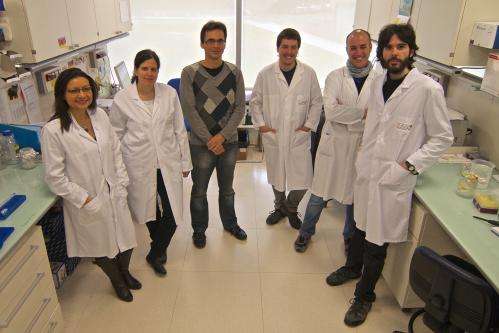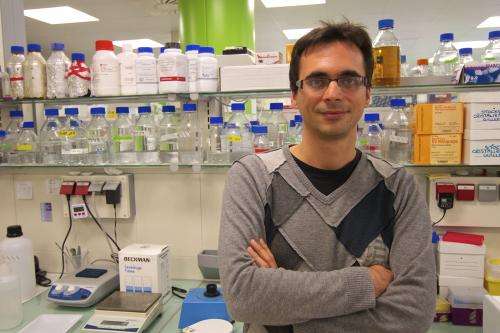Discovery of a new therapeutic target to fight against Legionella

Science is tightening the net around Legionella. A study conducted by the Basque Center for Cooperative Research in Biosciences, CIC bioGUNE, in collaboration with the National Institutes of Health (NIH, USA) and the Barcelona Supercomputing Center (BSC), has discovered that the bacteria releases the VipD protein when infecting human cells, thus preventing their destruction. This protein could become a target for future drugs to prevent the bacteria from causing infection.
The Legionella pneumophila bacteria is responsible for legionellosis, a disease that can cause pneumonia, very high fever and, in extreme cases, death. Legionella lives in stagnant water and enters our body through the airways when microscopic drops of contaminated water are inhaled.
Under normal conditions, human cells would "eat" and destroy the bacteria when it enters the body, but CIC bioGUNE, NIH and BSC have discovered that the Legionella bacteria releases the aforementioned protein that impedes the development of the cell's "digestive system".
Specifically, the protein inhibits endosome maturation. This compartment, when matured, acts as the cell's "stomach". By hindering the growth of this organule, the bacteria manages to survive within the cell.
"VipD protein is activated when entering in contact with human protein Rab5, which is located in the membrane of the endosome, and boycotts its development", explains CIC bioGUNE researcher Aitor Hierro.
In the study that was recently published in the US scientific journal Proceedings of the National Academy of Sciences, they determined the molecular structure of VipD protein, by X-ray crystallography. Furthermore, they have proven that the blockage of both proteins is possible, which prevents activation of the VipD protein.

The discovery of the role of protein VipD opens a new door to the fight against Legionella, since they could explore its use as a therapeutic target. Indeed, thanks to these advances new drugs could be developed to act on this specific protein, which would allow for cells to target the bacteria.
Experience
CIC bioGUNE has a strong background in the study of Legionella pneumophila. A year ago, the same work group made up by researchers from CIC bioGUNE, NIH and BSC published a paper in the journal PLOS Pathogens describing the strategy of the bacteria to hide within human cells and remain undetected.
"Studying Legionella is very interesting since it is an excellent model to assess the relationship between hosts and pathogens, due to its ability to avoid host's defences and multiply without being destroyed", says Hierro.
"Thanks to the institutional support, we are consolidating a research line with an immense potential that is making its way on an international level", he adds.
About legionellosis
Legionellosis was given its name in 1976, when a pneumonia outbreak was reported amongst the participants at an American Legion convention in Philadelphia (USA). This disease is caused by the bacterium Legionella pneumophila, which lives in stagnant water and is transmitted in the air.
The usual sources of infection are water systems or cooling towers in large buildings, such as hotels, hospitals or spas.
Infection by this pathogen can cause two diseases with very different prognoses. The best known is Legionnaire's disease, a severe respiratory infection that may lead to pneumonia and high mortality if a suitable antibiotic-based treatment is not used.
The other disease is known as Pontiac fever, a much less severe disease that progresses with short episodes of high fever and usually cures itself.
More information: María Lucas, Andrew H. Gaspar, Chiara Pallara, Adriana Lucely Rojas, Juan Fernández-Recio, Matthias P. Machner, and Aitor Hierro. "Structural basis for the recruitment and activation of the Legionella phospholipase." VipD by the host GTPase Rab5. PNAS 2014 111 (34) E3514-E3523; published ahead of print August 11, 2014, DOI: 10.1073/pnas.1405391111
















